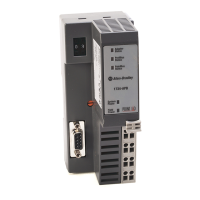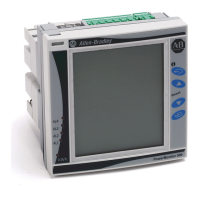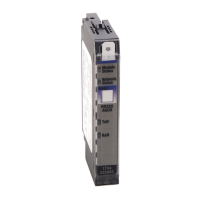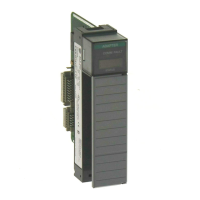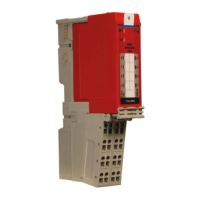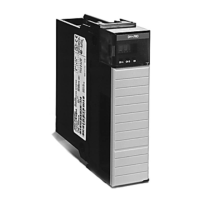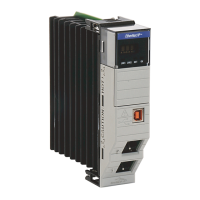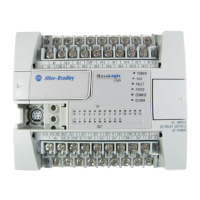Publication 1757-RM810A-EN-P - May 2002
Functional Blocks 3-39
PIDFF (PID Feedforward)
Description The PIDFF block is like the PID block but it accepts a feedforward signal as an additional input. You can configure the
PIDFF block so the feedforward signal is added to or multiplied by the normal PID algorithm’s incremental output to
meet your particular control requirements.
Function • The multiplicative feedforward action is typically used to compensate for variations in process gain that are
caused by changes in the throughput. It is usually used with a lead/lag relay to provide dynamic feedforward
control for a given application. For example, if the feed rate is doubled in a heating application, twice the amount
of fuel might be required, which is equivalent to doubling the process gain.
• Includes the feedforward signal (FF) in the calculation of the PID’s incremental output before the full value output
is accumulated.
Timeout
Monitoring
In cascade mode, performs timeout monitoring on SP. If a good SP value is not received within a predefined time, this
block invokes the following timeout processing.
• Sets the input timeout flag (TMOUTFL).
• Holds the SP value at its last good value.
• Changes the mode to a user-specified TMOUTMODE.
• Requests the input’s primary to initialize.
If SP times out and the block sheds to Auto mode, block sets its Cascade Request flag (CASREQFL).
Inputs • Requires both PV and FF inputs to provide its feedforward function. The PV and FF inputs must be pulled from other
blocks; you cannot store to them. The feedforward signal may come from a field device (via an IA channel block) or
an Auxiliary function block. Field inputs are typically subjected to deadtime or lead-lag compensation before being
connected to the FF input of this block, which may be provided by the Deadtime or Lead-Lag Auxiliary function
blocks.
• The SP input is not required, since it does not have to be pulled from another function block.
• If Mode is CAScade and the SP is pulled from another function block, it receives its value from an upstream
primary and it is an initializable input.
• If Mode is CAScade and the SP is not connected to another function block, the value of the SP is frozen at the last
acquired value.
• If Mode is AUTOmatic, the SP value may be stored by the operator or a user program.
• SP is an initializable input; PV and FF are non-initializable.
Input Ranges
and Limits
• PVEUHI and PVEULO define full range of PV in engineering units. They also define the engineering unit range of SP,
since PV and SP are assumed to have the same range.
• PVEUHI represents the 100% of full scale value.
• PVEULO represents the 0% of full scale value.
• SPHILM and SPLOLM define set point operating limits in engineering units.
• Prevents operator from storing SP value outside limits; if primary or user program attempts to store value outside
limits, block clamps it to appropriate limit and sets primary’s windup status.
More on following page
Spare Allen-Bradley Parts
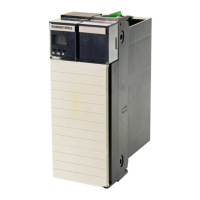
